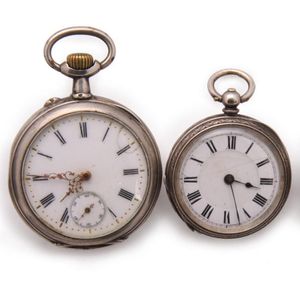19th Century Empire Ormolu Striking Pendule d'Officier
You must be a subscriber, and be logged in to view price and dealer details.
Subscribe Now to view actual auction price for this item
When you subscribe, you have the option of setting the currency in which to display prices to $Au, $US, $NZ or Stg.
- Oak - Native to Europe and England, oak has been used for joinery, furniture and building since the beginning of the medieval civilisation. It is a pale yellow in colour when freshly cut and darkens with age to a mid brown colour.
Oak as a furniture timber was superceded by walnut in the 17th century, and in the 18th century by mahogany,
Semi-fossilised bog oak is black in colour, and is found in peat bogs where the trees have fallen and been preserved from decay by the bog. It is used for jewellery and small carved trinkets.
Pollard oak is taken from an oak that has been regularly pollarded, that is the upper branches have been removed at the top of the trunk, result that new branches would appear, and over time the top would become ball-like. . When harvested and sawn, the timber displays a continuous surface of knotty circles. The timber was scarce and expensive and was used in more expensive pieces of furniture in the Regency and Victorian periods. - Boss - A boss is small round or oval decorative device, used as ornament in Neo-classical style furniture, ceramics, sculpture and other decorative arts. They are usually applied to the surface in the form of stylized rosettes, but in the best pieces they are carved directly into the surface. Also known as paterae (or patera) or rosettes.
- Foliate - Decorated with leaves or leaf-like forms.
- Ormolu - Ormolu was popular with French craftsmen in the 18th and 19th century for ornamental fittings for furniture, clocks and other decorative items. True ormolu is gilt bronze, that is bronze that has been coated with gold using a mercury amalgam. Due to the health risks associated with using mercury, this method of creating ormolu was discontinued in France in the 1830s. A substitute was developed consisting of about 75% copper and 25% zinc, however it was inferior to the bronze version. It was often lacquered to prevent it tarnishing.
This item has been included into following indexes:
Visually similar items

Antique Brevete alarm clock in the form of a large pocket watch, with Roman numerals and a white face, 11 cm diameter

A gold plated open faced Pulse pocket watch, case marked 14ct gold plated 511. Movement 189357 Pulse watch

A gold Georgian open faced pocket by John Lander Chester, 18ct rose gold pair cased Georgian pocket with cream dial, black Roman numerals, Pair cased hallmarked Jw 18ct Chester 1810, Movement engraved John Lander 1811834. Converted from verge to lever with

A sterling silver pocket watch together with a silver plate Continental pocket watch case maker possibly SW, Birmingham, 1833. Leaf and swag decoration to back. Diameter 4 cm. The silver plate watch with 10-jewel cylinder movement and gold detail. Diameter
